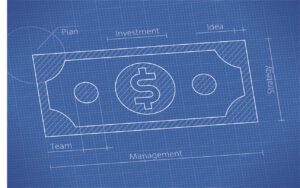

"How can architects justify a percentage-based fee? So...if I choose a really expensive refrigerator, my architect earns more money? How is that fair?!"
First of all, most people (unless they are quite wealthy) tend to buy their own refrigerator and have it shipped to the job site, where the contractor installs it. The cost of the refrigerator itself is never a part of the construction cost. (Only the cost of labor to install it is.) Therefore, whether the cost of the refrigerator is high or low, it has no impact whatsoever on the architect’s fee. This is true of many things like light fixtures, tile, paint, etc.

For example, if you buy a non-standard-sized refrigerator that requires unique installation and front and side panels to match the millwork, this usually increases the contractor’s cost of installation, which drives up the architect’s fee. But what does that have to do with the architect? Plenty. If you buy such a special refrigerator, the architect has to plan for the refrigerator’s installation much more carefully, design the cabinets that surround it with greater precision, and design the panels that go on the surface.
The installation of specialty tiles is typically more involved, and the architect must include detailed tile layouts in the construction drawings. We can’t simply write a note saying “install tile x.” We have to show in drawings, and sometimes in carefully-written specifications, exactly how to install that tile.
Another example: If the client would prefer to delegate the job of shopping for and arranging shipping for their appliances to someone else, the architect can take on the task and have the contractor arrange for payment and shipping to the job site. In each case, this involves extra time and work for both the architect and the contractor. If each were getting paid by the hour, this time would factor in as a number of hours for each person.
The bottom line is that almost everything that complicates a job or increases the time spent by the architect adds to the fee. As it should. The only way architects make money is by billing for time spent. When an architect does not charge for his time, he is quite literally working for free.
A client once asked why I kept billing for construction phase changes. After I pointed out that it was clearly part of our agreement, I explained that significant changes are often more costly to make after construction has begun. Things have to be re-arranged — often in a hurry. The scheduling and coordination of subcontractors — electrical, plumbing, HVAC, millwork, etc., not to mention inspections — can be exceedingly complicated. If an unexpected change occurs, everybody has to stop, re-schedule tasks, and sometimes undo work. Changes mean more work for everybody—primarily the architect and the general contractor, who have to arrange it all.
Let’s say you ordered a brand new car, custom, just for you, and the dealer promised that you would have it in two weeks. Then, if after one week you called them and said you changed your mind (e.g., you actually do want that sunroof and the on-board GPS systems after all), this would probably delay the car’s arrival, and it would certainly add to its cost. It would probably end up costing you more than it would have if you had ordered it all up front because the manufacturer would have to go back and rework a car that is already being assembled.
Architects do not charge like interior designers; we do not charge a fee on top of each purchase we make for a client. (99% of the time we don’t buy anything for a client.) We are essentially charging for the time and expertise we bring to your project.
A lot of balls need to be kept in the air at once. It is hard work and involves a lot of concentration and worry. Good architects care deeply about their projects, and they make their best effort to do an excellent job. Same goes for good contractors. We all put in a lot of time and effort.
At Douglas R. Schotland Architect, we do not nickel-and-dime over the percentage-based fee. Let’s say, for example, that you sign a construction contract with $500,000 cost. We would calculate our fee as, say, 10% of that cost. If your construction cost increases to $567,896.23 because you decide that you want additional millwork in the living room and another bathroom renovated, our fee will likewise increase. But it will go up to 10% of maybe $560,000. We are not trying to “milk” you for every penny, but we do want to compensated fairly for the extra work that we must do.
This method of billing is not a precise science, however we believe that percentage-based fees are the fairest way to bill. For many years, we billed by the hour. Although that method was safe, it was time-consuming for us to track every hour spent, and it as an annoying distraction for our clients from the important work we were trying to do. People often find it hard to believe that it all takes as long as it does. But it does — it really does!
We hope this helps you to understand the percentage-based fee. If you have questions, we invite you to request a free consultation:









300 Witherspoon Street, Suite 201, Princeton, New Jersey 08542
609.737.6444
© Douglas R. Schotland Architect, LLC 2025